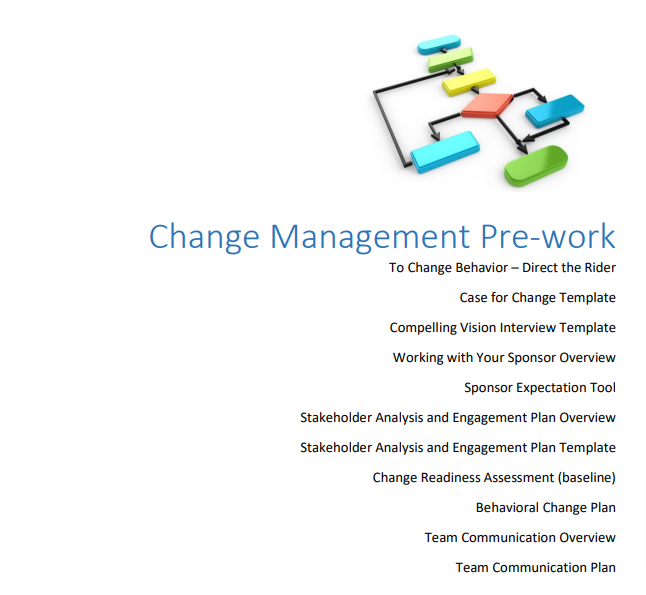I was scrolling through another "change management best practices" post when something made me stop cold.
70% failure rate.
That's not a typo. According to industry research, 7 out of 10 organizational change initiatives completely fail to achieve their desired objectives. I've been in L&D for years, and that number still hits like a punch to the gut.
But here's what made me dig deeper into UC Berkeley's Change Management Toolkit: they don't just tell you what to do. They explain the neurological why behind human resistance to change. And once you understand the psychology, everything else becomes tactical execution.

Change Management Toolkit
*This resource is recommended for its educational value and is not an EDU Fellowship original work. All rights belong to the original creators, UC Berkeley.
Above is the comprehensive toolkit from UC Berkeley's Business Process Management Office. Below are my takeaways that will transform how you approach change initiatives in your organization.
The Hidden Psychology Every L&D Professional Must Understand
The toolkit introduces a game-changing framework: the Rider, the Elephant, and the Path. Think of your brain as having two systems working simultaneously. The Rider (rational brain) likes to analyze and plan. The Elephant (emotional brain) provides the energy and motivation.
Here's the part that changes everything: When your six-ton Elephant disagrees with where the Rider wants to go, the Elephant always wins. Self-control is exhaustible. Emotion is renewable.
Most L&D programs fail because they only talk to the Rider. We create logical presentations, detailed process maps, and comprehensive training materials. Then we wonder why adoption rates tank after week three.
Your reality check: Look at your last major rollout. Did you spend more time on the "what" and "how" or on the "why should I care emotionally"? The Elephant needs to feel the need for change, not just understand it.
Stop Treating All Stakeholders Like They're the Same Person
The toolkit's stakeholder analysis framework completely reshapes how I think about change adoption. Every person in your organization falls into one of five categories based on two dimensions: agreement with your vision and trust in you/your team.
- Allies (high agreement, high trust) need affirmation and clear roles.
- Fellow Travelers (high agreement, low trust) need trust-building without pressure.
- Opponents (low agreement, high trust) need collaborative problem-solving.
- Adversaries (low agreement, low trust) need threat minimization.
- Neutrals (unknown position) need education and position assessment.
The strategic insight: You engage with stakeholder types in priority order - Allies first, Adversaries last. Most L&D teams do the opposite, spending 80% of their energy trying to convert the loudest resisters.
Your move:
- Phase 1 - Stakeholder mapping: Plot your key stakeholders on the agreement/trust matrix
- Phase 2 - Engagement sequencing: Start with Allies to build momentum, then move to Opponents (your highest-value conversion targets)
- Phase 3 - Resource allocation: Limit time spent on Adversaries to 15% of your total stakeholder engagement effort
Reality check questions:
✅ Are you spending more time with supporters or resisters?
✅ Do you know why each stakeholder group might resist?
✅ Have you identified which stakeholders can influence others?
The Fatal Flaw in Your Communication Strategy
Here's something that made me completely rethink our approach: When people are under stress, their ability to process information drops by 80%. Read that again.



